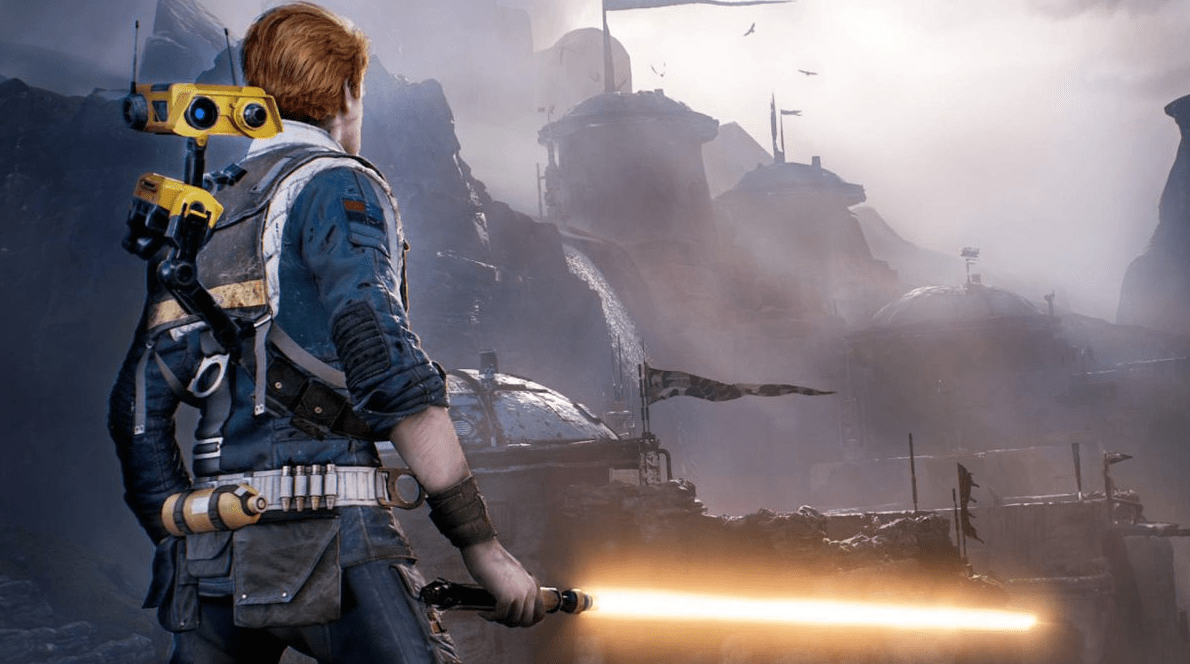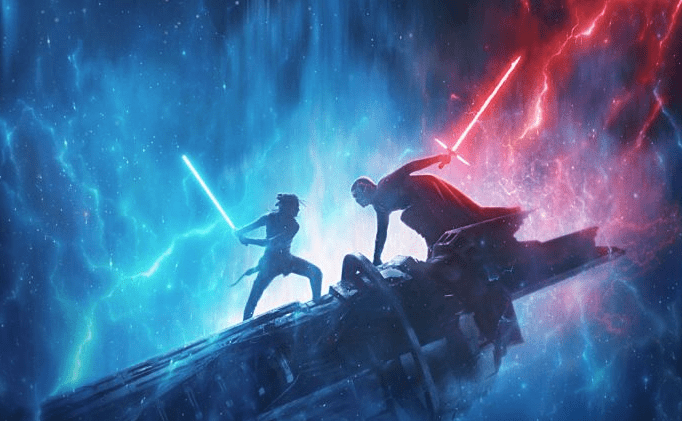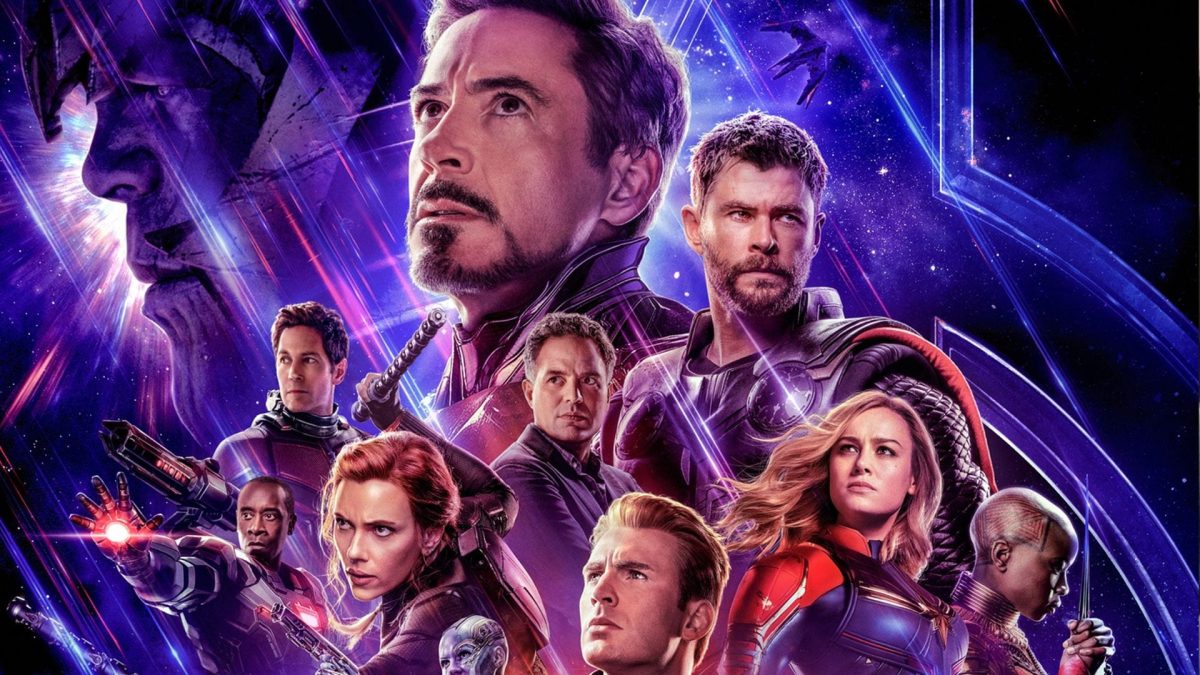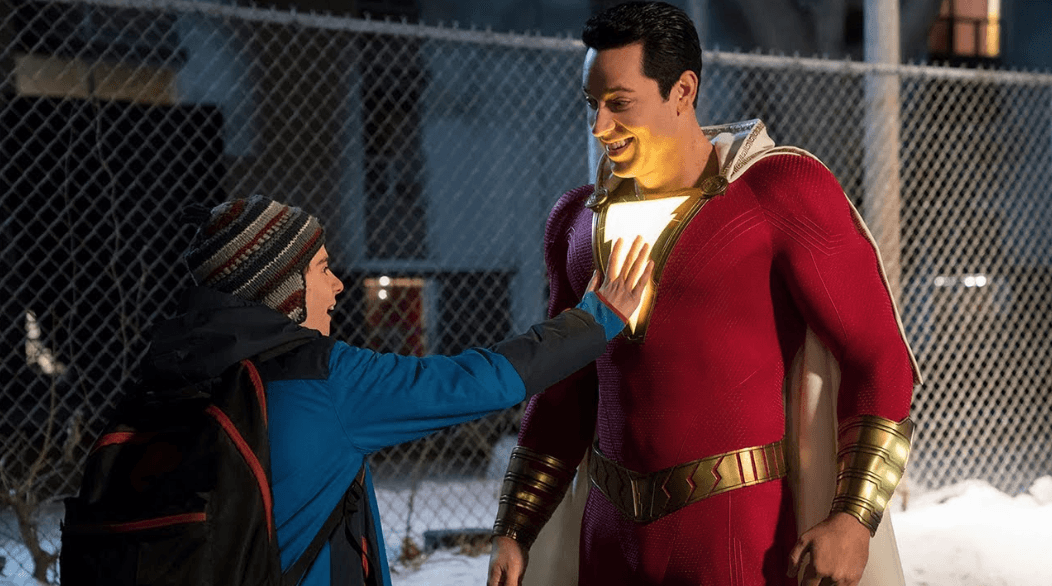by Joseph Sweeney | staff writer
In 1929, the world would enter a drought like no other, as for 10 years, economic hardship would overtake the lives of many, leaving those such as George and Lennie subject to doing hard labor for low wages. In 2010, the world would enter a similar depression, where decent Star Wars video games were nowhere to be found. Some would try, though all were found to be lacking of the enjoyment that was given to us by the golden age of Star Wars video games. That was until just last year, when the second great depression seemingly ended, with the release of Respawn Entertainment’s Jedi: Fallen Order and the surprising comeback of DICE’s Star Wars Battlefront II (2017).
Jedi: Fallen Order
Jedi: Fallen Order is a purely single-player experience, developed by Respawn Entertainment, famous for the online FPS games Apex Legends and Titanfall, and was released last November, where it quickly became the developer’s best selling game of all time. The game, taking place five years after Order 66’s execution in Star Wars: Episode III, follows the story of a former Jedi Padawan named Cal Kestis, who, after being discovered by the empire, must once again embrace his Jedi ways in order to survive. After joining his new team of fellow rebels, Cal befriends a droid named BD-1, who shows him recordings of a deceased Jedi Master, who made preparations for the day that the Jedi Order would inevitably fall. Cal eventually learns of a Jedi Holocron, a device meant for storing information in the Star Wars universe, which contains the names and locations of force sensitive children. The story then focuses on the team’s journey to excavate the device, in an attempt to reestablish the Jedi Order.
Spoilers ahead for the end of Fallen Orders’s Story: The best part of the game’s story though is how it manages to stay in line with the plot elements from the original trilogy of films. Like in Return of the Jedi, Cal and his allies slowly realize that the Jedi Order was a flawed organization, and was not meant to survive, at least not in its original state. Rather than set out to find the next generation of Jedi, and probably lead said children to their deaths, Cal decides to trust in the force to give them a future, then destroying the Holocron to ensure the children’s safety. What is slightly bothersome, however, is the fact that the game’s advertising spoiled Darth Vader’s surprise appearance at the end of the game, though on the other hand it would be hard to imagine a rebellion era Star Wars game without Vader making some sort of appearance.
The gameplay is best explained as a combination of the combat-systems from the Dark Souls franchise, with elements of exploration inspired by the Tomb Raider franchise. Like in Dark Souls, combat revolves around attacking to break an enemy’s posture, using a combination of light and heavy attacks and special abilities, or using parry and dodging techniques in order to out-maneuver them. Using parkour, force abilities, and puzzle solving skills, the player can also find collectible and cosmetic items which they can use to customize Cal and the robot BD-1’s design, though the most exciting aspect of this system is being able to craft your own lightsaber. While not affecting actual gameplay, the player is given the ability to customize each part of their weapon, choosing what the hilt looks like, to the material you craft it out of, to the color of the blade itself. What does affect gameplay however, is the ability to switch between different lightsaber fighting styles, such as the traditional single-bladed variant, the double-bladed variant used by characters such as Darth Maul and Dark-Side Rey, and dual wielding lightsabers like those used by Ahsoka Tano in Star Wars: The Clone Wars and Star Wars: Rebels.
The collectathon aspect of the game is not without flaws however. For one, Cal’s changeable costume design is the same at its core: a poncho over combat armor. Why not be able to find traditional Jedi robes on the Jedi Temple on Ilum? Why not give us Jedi battle armor straight out of the Clone Wars? On the lightsaber side of things, what’s disappointing about the creation system is the blade’s colors themselves. For most of the game, the player will only have access to three colors: green, blue, and with the recent patch, orange. The rest of the lightsaber colors: indigo, purple, magenta, yellow, and cyan, aren’t unlocked until late in the game when visiting the Jedi Temple on Ilum. The biggest shame is the fact that the red lightsaber color is unobtainable in the game entirely, despite the fact that the characters acquire and use red lightsabers during the main story. Regardless, the exploration and collectathon aspects are the best parts of Fallen Order, as it feels highly rewarding when discovering new areas to probe for buried treasure.
In terms of the game’s environments, each planet represents a different type of area: Bogano, with its peaceful grassy meadows, Zeffo, with its mountainous ruins under imperial occupation, Kashyyyk, the jungle planet and home-world of the Wookies, Dathomir, the volcano-desert like area corrupted by dark magic, and Ilum, a former sacred-place of the Jedi Order. Each of these planets have plenty of areas to explore and optional bosses to fight, and make up the majority of the game’s 40-plus hour playtime, as they can easily eat up hours of your time trying to explore them all 100 percent.
Battlefront II (2017)
Star Wars: Battlefront II, is a first person shooter and sequel to the 2015 game, which was the reboot of the 2004-2013 series of the same name, developed by EA DICE, well known for another first person shooter based franchise, Battlefield. While the game was released back in 2017, it was met with widely negative review scores due to its slow progression system and pay-to-win style gameplay.
After problems arose with its predecessor, Battlefront (2015), lacking a wide variety of content, with many multiplayer maps being locked behind paid DLC, as well as single-player content being almost non-existent, the series’s publisher, EA, promised a more complete Star Wars experience. While the sequel included a more definitive single player mode, and did away with day-one paid expansion packs, its online was noted to be heavily pay-to-win, as the game’s heroes: Jedi, Sith, and other famous Star Wars characters, were not playable unless gamers spent several hours just to unlock one, or spent money on the in-game loot-boxes; essentially gambling real money for a slight chance at unlocking a new playable character, or other essential in-game item.
Now, the game has seen a relative comeback in the Star Wars gaming community, just seeing a major update in December. First of all, developer EA has removed all the microtransaction-based content from the game, save for a few cosmetic-only items, and has made progression a much more efficient system for players. Heroes are now all unlocked by default for every player, making the game an even experience for all players. December’s update also brought forth elements from the new movie, The Rise of Skywalker, such as a new jungle planet and units to control, including Sith Troopers and character skins based on the designs of the movies main characters.
Battlefront II also includes a single-player campaign mode, an aspect which was missing from the game’s predecessor. The story takes place during and right after the events of Return of the Jedi, and mainly focuses on the perspective of the imperial team Inferno Squad. The player takes control of Iden Versio, commander and leader of Inferno Squad, in an attempt to fight off the rebellion after the Emperor’s death. While the story mode can certainly help ease newcomers into the game’s multiplayer modes more easily, giving them practice with shooting and evasive maneuvers, it is still relatively short and uninteresting compared to the experience given by Jedi: Fallen Order.
The game’s online component is played across several modes where objectives differ depending on the player’s team, whether that be the Empire or the Rebellion if playing in the era of the Original Trilogy, the Resistance or First Order’s forces during the sequel era, or the Clone and droid armies if during the prequel era. Modes include such games as Strike where players must capture objectives from the opposing team capture-the-flag style, or Starfighter Assault, which sees 12 on 12 player action all taking place in the air.
Verdict
Overall, Star Wars video games have definitely made a comeback since their fall in 2010, with gamers now having definitive options for what kind of Star Wars experience they wish to have. For those looking for a multiplayer action-oriented experience, Battlefront II definitely delivers, as the game is loads of fun to play with random people online, and is still receiving updates to this very day. If you’re looking for more of a single player experience, Battlefront is not for you, however, as the game’s single player content is not expansive enough to keep players interested for more than a few hours. For that, Jedi: Fallen Order is definitely a solid enough title, as it fits into the single-player category well as an open-world action-adventure game. Regardless of preferences, both titles are faithful to the series’ name, and will hopefully allow for more great Star Wars games to be made in the near future.








